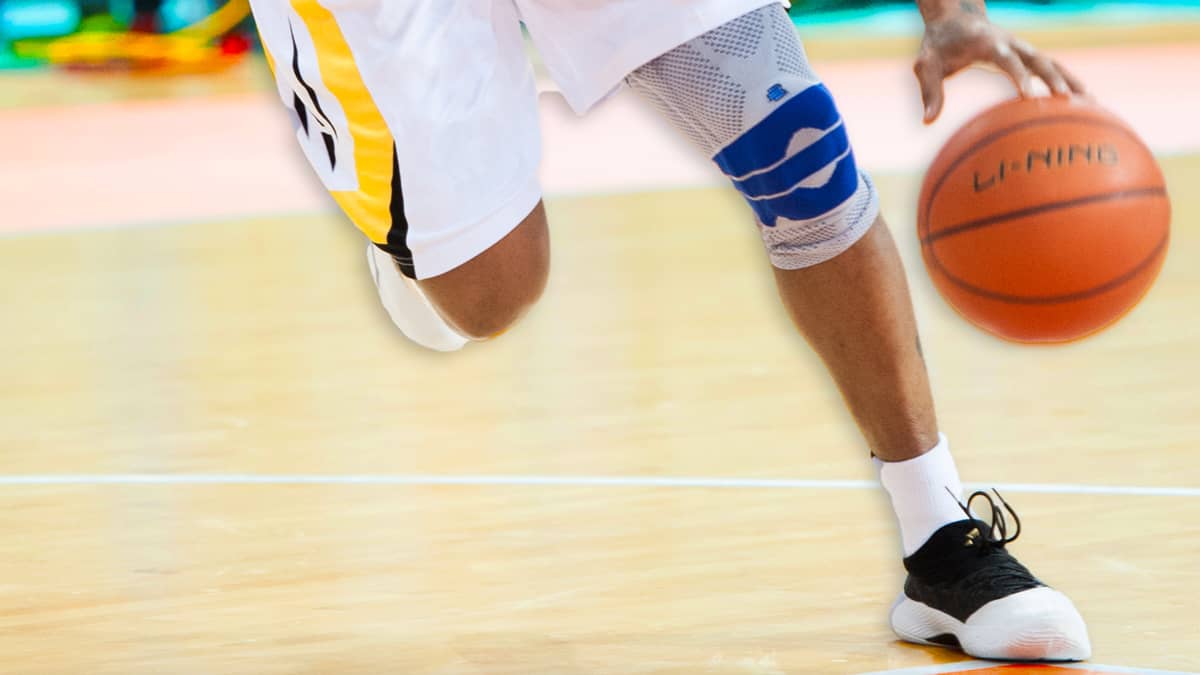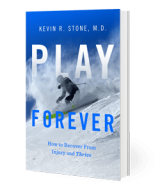Steph Curry’s Knees (an excerpt from Play Forever)
When the Golden State Warriors take the court, their speed and precision are second to none. But while you watch the ball, I watch the knees. Both are doing remarkable things, especially under the guidance of point guard Steph Curry. Here is what’s happening from an orthopaedic surgeon’s perspective.

This article is adapted from Dr. Stone's book Play Forever.
Curry plays an average of 34 minutes each game. Players take about 175 steps per minute during a game. So, in Curry’s case, that’s 5,950 steps per game. (While calculated measurements of professional basketball players’ steps per minute or per game vary, I am using reported averages.) While he is running (which is most of those steps), he lands on a single leg, with a force up to three times his body weight. If Curry’s playing weight is 185 pounds, that’s up to 550 pounds of force with each step, distributed through his feet, knees, and lower body. Now you know another reason why the coach limits the minutes Curry is on the floor.
When Steph Curry jumps—and he takes more than 1,000 shots per season in which he leaves the floor, not including the thousands more he does in practice—he lands with even greater force. (Fortunately, he usually lands on both legs.)
To the surprise of many, the cartilage of the knee joints (and other joints of our bodies) can endure these forces without developing arthritis. Unless the joint is injured, there is no evidence that the forces of running or jumping damage cartilage. That’s because this remarkable substance is made up of collagen fibers and a sugar matrix that absorb and release water with every compression. The natural lubricants of the joint—hyaluronic acid and lubricin—are ultra-slippery. As long as those surfaces stay intact, the stresses of sports are handled well.
Weight matters. A 10-pound increase can add up to 50 pounds of force on each knee joint during the two to three million steps that people typically take each year. Curry compensates for his increased weight by increasing his musculature. Muscles, when well developed, can shield the joints to a degree by absorbing the energy of the jumps and landings. Coordination matters, too. Watch Curry hit the court after a shot: He lands softly. His years of training to be smooth in the jump shot and coordinated in all his running motions diminishes awkward, off-balance landings and disperses the forces on the joints evenly.
When an injury occurs, however—such as a torn meniscus, a nick in the surface of the cartilage, or a torn ACL—the mechanics of the joint become abnormal. Unless the compromised element is repaired or replaced immediately, degradation, called traumatic arthritis, sets in. Much of the new anabolic era of orthopaedics involves the biologic replacement of damaged cartilage. It also includes the meniscus and the ligaments, in addition to the lubricants, growth factors, and cells that restore health to the joints.
For Curry, the key is to not get injured in the first place—but if he does, to repair the damage and replace the injured tissues promptly. Then augment the repairs with injections of hyaluronic acid, boosted by anabolic growth factors. The same treatments are now applied to our weekend warriors.
The best advice we can give is to build muscle to protect the joints and improve our overall fitness and balance to diminish the chances of injury. We have remarkable bodies, with capabilities that exceed our wildest imaginations. But their vulnerabilities must inspire us to train, prepare, and enjoy every day. We may not be the athletic equals of Steph Curry, but there’s a lot of warrior in every one of us.
For more guidance on diminishing injury risk, check out Dr. Stone’s book Play Forever: How to Recover from Injury and Thrive, on Amazon now.

